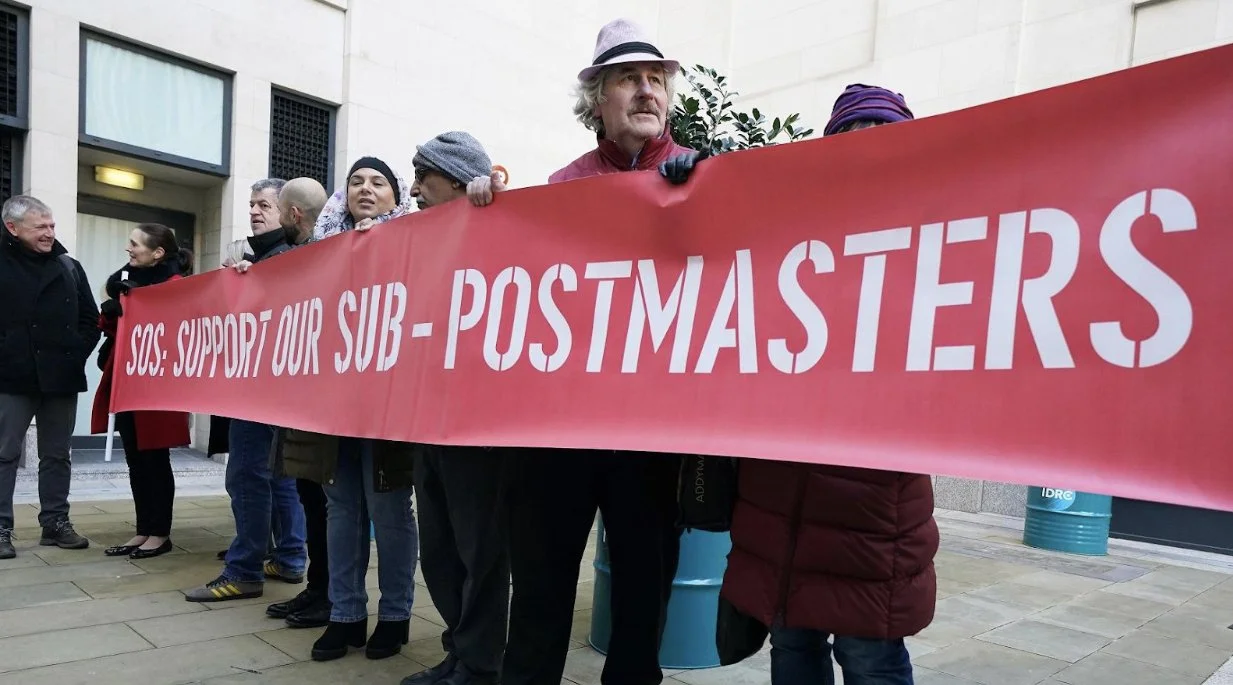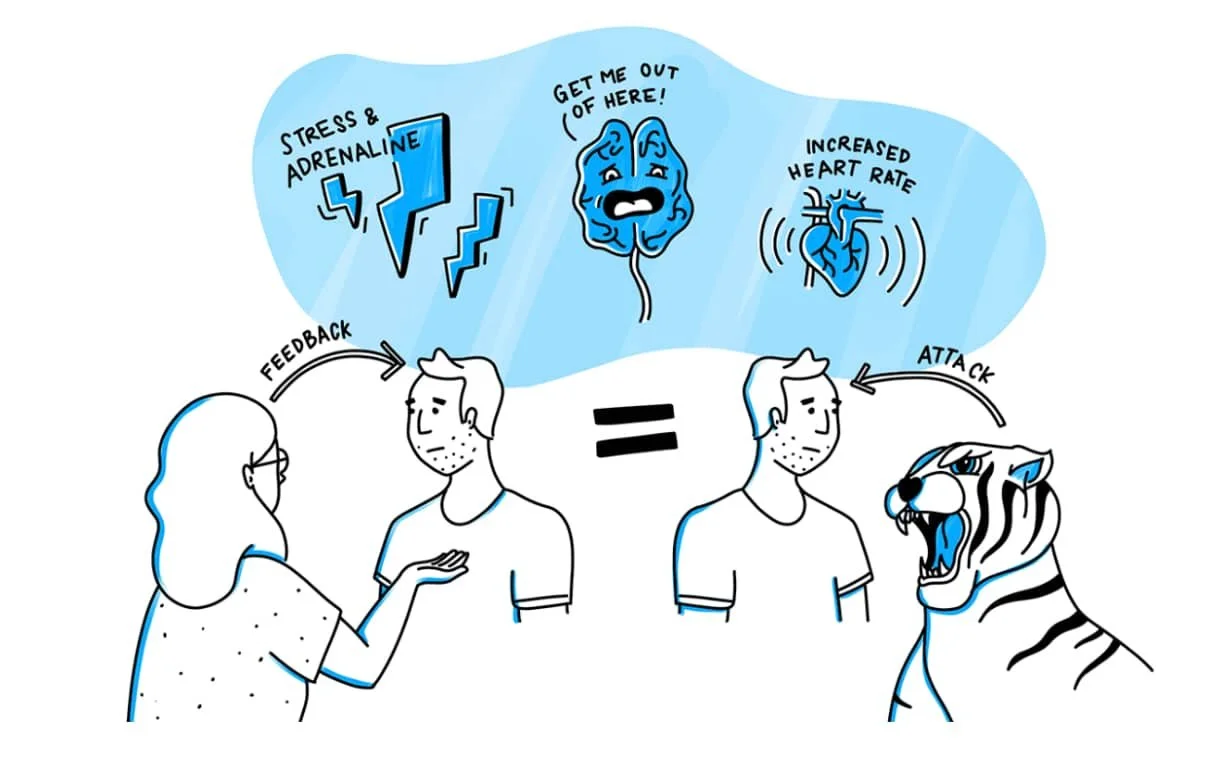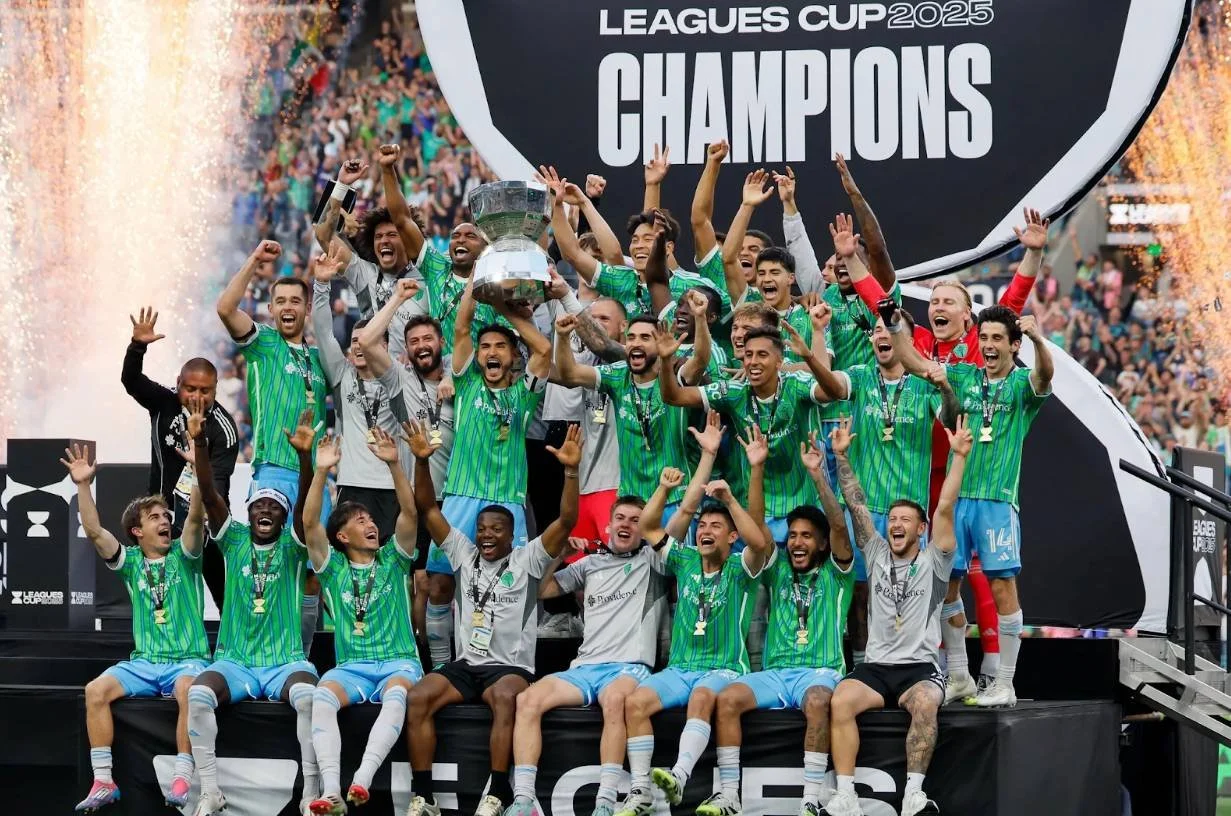When it comes to building a high-performing organization, your greatest resource is the potential of your senior leadership team.
The Leading Together newsletter helps you unlock it.
Check out our previous posts below where we share real-world case studies and insights from our work with executive teams across industries.
Teamship Starts with a Team Charter
Imagine an NFL team showing up to a game with no playbook, or no clear scheme to guide the way they play. Everyone is talented. Everyone is working hard. But each person is operating from their own playbook.
Lessons from the UK Post Office Scandal
Leadership teams pride themselves on being problem solvers. It is one of the reasons they exist. But even the strongest teams struggle with something far more foundational: accurately identifying what their real problems are in the first place.
The Secret to Scaling Meaning Isn’t Your Mission
Every organization begins with belief. Before there is a mission statement or a strategic plan, there is a conviction, something that feels too important to ignore. It is the “why behind the why.” The deep conviction that made someone say, “This matters enough to build something around it.”
Navigating Ambiguity or Driving Clarity?
In recent years, the ability to “navigate ambiguity” has become one of the most celebrated leadership traits. It appears in job postings, competency models, and even company values. It sounds modern and adaptive, a badge of readiness for a fast-changing world.
But there is a tension worth naming. The more we elevate “navigating ambiguity” as a hallmark of great leadership, the easier it becomes to neglect one of leadership’s most essential responsibilities: creating clarity.
How Great Leadership Teams Build Trust During Change
In every organization, change is constant. A new strategy, a restructuring, a product shift, or a realignment of priorities. Yet for all the energy leaders invest in designing change, far less attention is given to explaining it. According to a Gallup study, only 13% of employees strongly agree that leadership communicates effectively about what is happening in their organization.
The Hidden Cost of Avoiding Conflict
A recent Harvard Business Review study found that leaders spend nearly 20% of their time managing conflict. That is one full day every week devoted to navigating tension, and that doesn’t come close to telling the whole story of impact.
We Only Go as Far as Our Systems
James Clear once wrote, “We don’t rise to the level of our goals, we fall to the level of our systems.”
When performance falls short, leaders often respond by raising the bar. They set a loftier vision, announce a bold new strategy, or demand higher expectations. It feels inspiring in the moment, but most recurring problems are not solved by aiming higher. They are solved by stepping back, looking deeper, and finding the forces that create them in the first place.
5 Ways to Level Up Your Leadership Team Meeting
Last week I was speaking at a conference, unpacking the characteristics of high-performing leadership teams. When I got to the characteristic of “highly disciplined operating rhythms,” I asked the group to raise their hand if they were not satisfied with the quality of their meetings. Ninety-five out of one hundred hands shot up. I think the other five were daydreaming.
The Leadership Decision That Shapes Every Other One
The number one driver of organizational health is the strength of your leadership team. When that team is cohesive and committed to supporting each other and carrying the weight of leadership together, it makes it much more likely that all the other teams in the organization will end up mirroring their performance. But the opposite is also true. When they are dysfunctional, disconnected and not realizing their potential, the effects ripple everywhere.
The Surprising Thing That Anchored Warby Parker’s Growth
In a recent Harvard Business Review (HBR) article, researchers profiled what they call “super facilitators” - leaders who’ve stopped trying to be the smartest person in the room and instead create the conditions for their teams to think, decide, and execute together.
Rather than dominating the room, they guide it. They slow down to make space for many voices. They actively shape team conversations so that decisions and accountability aren’t just flowing from the top, they’re being built together.
It’s a powerful reminder: The best leadership doesn’t come from one individual genius. It comes from teams who know how to lead together.
The Surprising Trait People Want Most in a Leader
If you were asked to think of the leader who had the most positive influence in your life, and then asked to name the top three words that come to mind when you think of them, what would you say?
Gallup asked this very question to over 70,000 people around the world. And one word stood out clearly above the rest: Hope.
You might have guessed Trust, a concept often connected to psychological safety, strong culture, and high-performing teams. But in Gallup’s study, Hope was mentioned by 56% of respondents. Trust came in much lower at just 33%.
Offering a sense of hope matters, potentially more than we often realize. So what does this mean for us as leaders? It means it's our responsibility to cultivate hope and in this newsletter we will be sharing some ways you can do just that.
Building a Culture of Feedback
When it comes to building a learning organization committed to continuous improvement, there may be nothing more essential than creating a culture of feedback.
Think back to a significant moment of growth in your own leadership journey. Odds are, feedback played a role. Maybe someone gave you a nudge that helped you see what was possible. Maybe they pointed out a blind spot that helped you improve. Maybe they simply saw potential you didn’t yet fully see in yourself yet. That moment likely left a mark and helped you take a meaningful leap in your development as a leader.
Now imagine that same dynamic, but across an entire team. Everyone notices each other. Everyone is investing in each other’s growth. Everyone gives and receives feedback in all directions. It's possible when you have a culture that encourages and sees the value of feedback.
The good news? Through designing feedback systems and a willingness to try on new practices, your team can begin building a culture of feedback.
The Overlooked Part of Collaborative Work
When it comes to teamwork, we often invest the most thought and energy into the least frequent forms of collaboration.
We obsess over meeting agendas, offsite facilitation, and optimizing our Zoom calls. But the truth is, those moments represent a small fraction of our total collaboration time.
The bulk of our work happens asynchronously in Slack threads, project docs, Loom videos, and email chains. It’s ever flowing and often very, very messy.
And yet, in many organizations, it’s the part we design the least.
From Individual Genius to Team Brilliance
In a recent Harvard Business Review (HBR) article, researchers profiled what they call “super facilitators” - leaders who’ve stopped trying to be the smartest person in the room and instead create the conditions for their teams to think, decide, and execute together.
Rather than dominating the room, they guide it. They slow down to make space for many voices. They actively shape team conversations so that decisions and accountability aren’t just flowing from the top, they’re being built together.
It’s a powerful reminder: The best leadership doesn’t come from one individual genius. It comes from teams who know how to lead together.
But here’s the hard truth: most teams don’t know how to do that.
Why Everyone Started Calling Him Super Dave
Years ago, I worked with a CEO who loved to celebrate people throughout our organization. One day he highlighted Dave, a facilities team member, during a leadership meeting. He invited him into the meeting and then began to gush over him as he stood next to Dave.
“Did you know Dave got the entire cafeteria primed and painted in half the time it took the last contractor? I’ve been a school administrator for 30 years, and I’ve never seen anyone as productive. In fact, he’s not Dave. He’s Super Dave!”
You could see it from the look on his face. No one had ever acknowledged his work like this. From that day on, everyone called him Super Dave. And every time someone said, “Good morning, Super Dave!” It reminded him that he was seen and that he mattered and that his work made a difference to everyone.
That CEO made it clear: not only was Dave valued, but he was also adding value. And that’s the heart of what Zach Mercurio calls mattering in his book The Power of Mattering, the experience of feeling valued and knowing we add value.
If You’re the Only One Who Sees the Numbers, You’re at Risk
We once worked with a CEO who had personally managed the finances of his business for more than 30 years. Everything ran through him, and no one else in the company understood the financial model.
When we finally convinced him to share the financials with his leadership team for the first time, something remarkable happened. In that very first meeting, one of the leaders spotted an opportunity in a revenue stream she hadn’t realized was so significant. She adjusted her priorities to support it, and within the first quarter, her changes generated an extra $50,000 in revenue. Even better? She created a process to optimize that revenue long-term.
That’s what happens when you move from solo ownership to shared understanding. He spent years holding the weight alone, but as soon as he opened it up to the rest of the team, they began organically moving in ways that strengthened their financial picture.
Your One-on-Ones Are Broken
Opening up challenging conversations in a team setting can feel risky. You wonder how people will react. You’re not sure if you’ll be able to navigate the tension or complexity. What if it makes things worse?
These are valid concerns. In our experience, many leaders share them. Sometimes it's a fear of people's feelings being hurt. Sometimes it's a fear that you won’t be able to find alignment on a complex issue with a diverse range of perspectives. When this fear is in the driver seat, an unspoken agreement forms: we’ll save the real talk and complex issues for one-on-ones.
It feels safer and more controlled. But when all tough conversations are confined to one-on-ones, the cost can be steep. Team meetings become status updates instead of spaces for collaboration and calendars fill up with redundant conversations.
Yes, one-on-ones still matter, but not as the default container for everything complex or sensitive.
Mr. Rogers was Right
Years ago I led an information management team. There was one team member, let’s call him John, who I struggled to connect with.
John came across as a bit of a know-it-all. He talked a lot, didn’t appear to listen well, and I quietly typecast him as your stereotypical arrogant IT guy. I respected his skills but found him hard to connect with, and truthfully, I didn’t try that hard.
But then something changed. I had decided to try a new practice with the team, something to help us get to know each other better, to build more connection and trust. My goal was for each member of the team to increase their empathy and understanding for each other. I didn’t expect it to change me as much as it did.
Do you have a Team Charter?
The Bear is back for season 4, and it inspired us to revisit one of our favorite episodes from Season 2, Forks. The focus of the episode is on cousin Richie. Up to this point, he has been mostly defensive, directionless, and stuck in his ways. Just about everyone can’t stand being around him. But then, surprisingly a week training in a different restaurant, gives him a sense of purpose that would lead to meaningful change for him.
Richie is sent to stage at a 3-star Michelin restaurant and at first, he hates it. He scoffs at the routine, the precision, the standards. But slowly, something shifts. What changes him isn’t just a willingness to reach their level of technical excellence. It's something much deeper. It’s the deep sense of purpose they all have. Every person in that restaurant knows exactly why they’re there: To create an unforgettable experience for every guest.
Teams that Learn Together, Grow Together
There’s no doubt that individual learning can have a big impact. Reading books, listening to podcasts, and receiving coaching can have a big impact on how you lead, and certainly can spark personal growth and equip you to lead your team more effectively.
But if the goal is to truly transform how a team works, how they communicate, make decisions, stay aligned, and navigate challenges, that change isn’t likely to come from individual insights alone.
Team-level change requires team-level learning.
When teams learn together, they build shared language, collective understanding, and the kind of trust and alignment that actually shifts how work gets done.





















